Does a no pull harness work?
The short answer, yes!
A no pull harness will limit pulling for a lot of dogs, making them easier to manage on walks. And that’s what most of us want – dogs that are easier to handle!
The long answer … what works for one dog will not work for all dogs and there is no perfect training collar or harness. Sometimes you just have to try a variety of tools and then settle on what works the best for your dog.
Each training collar or harness has its own pros and cons. The main con with most no pull harnesses is they restrict the dog’s natural movement in some way, which I will get into later.
Sometimes you just have to pick your poison.
Any collar around the neck does put some pressure on the dog’s throat, for example.
A Gentle Leader that fits around the muzzle puts pressure on the dog’s sensitive face and under the eyes.
A no pull harness can affect a dog’s gait, injure the shoulders or chafe under the arms.
So I’m not writing this article to convince you to use a no pull harness over another tool. You know your dog and situation best. I’m just trying to help people make the best choice for themselves. I am not sponsored by any of the brand mentioned in this article.
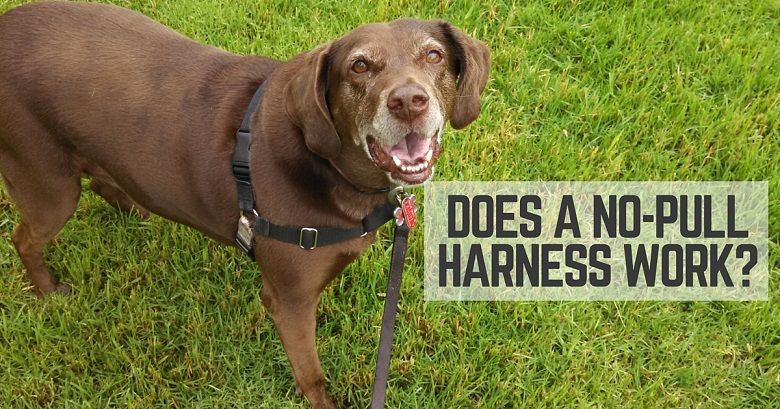
As far as no pull harnesses go, I personally use the EasyWalk no pull harness on a lot of walks for my 63-pound weimaraner. He’s a short and stout, very muscular weim.
This is the best no pull harness I’ve found for Remy, though the harness is far from ideal. More on that later. I just wanted to let you know that I do use a no pull harness sometimes.
No pull harnesses are just tools – the actual training falls on us
This goes without saying, but a no pull harness will not magically teach a dog not to pull.
A no pull harness is a management tool that makes it less comfortable for the dog to pull. The actual training still falls on us, if we choose to do so. Here is my article on how to teach a dog not to pull.
That said, It’s OK if you choose not to train your dog not to pull and just want to always use some sort of tool for management. That is totally fine! I get it.
How does a no pull harness work?
A no pull harness is a harness designed to limit a dog’s pulling. You typically clip the leash to the front of the harness, at the dog’s chest.
If the dog ties to pull, the harness gently moves the dog’s shoulders and core to the side. This discourages pulling, and you would praise your dog whenever he is walking on a loose leash.
Here is a picture of the EasyWalk harness that I use:
A no pull harness is often recommended as an alternative to choke or prong collars. For this reason, no pull harnesses are popular with trainers who focus on positive reinforcement training methods.
Although, if your goal is to use “positive reinforcement” only, you do have to consider your dog’s point of view.
Some dogs do NOT view a harness as positive and they would much rather wear a prong collar over any harness.
No pull harnesses are also an alternative to head collars like the Gentle Leader or Halti. Since most dogs hate having a Gentle Leader over their face, no pull harnesses seem to have grown in popularity.
A no pull harness is also called an anti-pull harness, a front-clip harness or a front range harness (the term “Front Range harness” is trademarked by Ruffwear).
Best no pull harnesses:
- Petsafe’s EasyWalk harness
- the Freedom Harness
- Mighty Paw’s Sport Harness
- Ruffwear’s Front Range harness
There are many, many others though. If you have a favorite no pull harness you think I should mention, please leave it in the comments at the end of this article.
Unless specified, I am not referring to a specific brand in this article. I am referring to all no pull harnesses in general.
No pull harness vs. a regular harness
No pull harnesses are different from standard harnesses.
The main difference is a standard harness typically makes pulling comfortable and convenient for the dog because the leash connects to the dog’s back (on the top of their body).
Typically, a standard harness does not restrict the dog’s natural movement.
There is nothing wrong with using a standard harness as long as you are OK with it. Some dogs don’t pull at all and a regular harness works great for them. Or maybe your dog’s pulling doesn’t bother you at all. That’s fine!
Some people even want to encourage their dog’s pulling when they run “canicross” style! This can be a great workout and is a sport that Remy and I enjoy!
On the other hand, if you’re frustrated with your dog’s pulling or if you’re having trouble controlling your dog, then a standard harness is not the best option for you.
Instead, you might want to consider a no pull harness, a prong collar, a martingale collar or a Gentle Leader. I have all of these tools for my own dog, for different situations and they all have their pros and cons.
Do no pull harnesses hurt dogs?
An argument against no pull harnesses is that they can cause injury to the dog’s shoulders.
This is a valid concern to consider.
A no pull harness does restrict or alter the dog’s natural gait and movement, particularly in the shoulders. If the harness prevents the dog from having full range of motion while walking and running, this can lead to an injury in the muscles or tendons over time.
I am not a vet so if you are concerned about whatever gear you are using, I encourage you to discuss it with your pup’s veterinarian. Pretty much any training tool available to us does have the potential to cause injury.
I do not know how likely or how often injuries occur from no pull harnesses, but I do worry about my own dog.
Not all no pull harnesses have a strap across the shoulders.
Not all no pull harnesses have a strap that goes across the shoulders. However, for my dog, that strap is unfortunately what works best to manage his pulling.
Here is a picture of the EasyWalk no pull harness on Remy, to show you what I mean. (When we’re walking, the strap doesn’t hang quite so low across his shoulders.)
When my dog pulls, the strap tightens across his shoulders. It works the same way as a martingale collar works, with a little loop that tightens or expands the larger loop based on pressure/release.
RuffWear and Mighty Paw no pull harnesses
Some no pull harnesses are less restrictive.
The RuffWear Front Range harness and the Mighty Paw Sport Harness both have a clip in the front but do not have the strap that tightens across the shoulders.
Here is Remy wearing Mighty Paw’s Sport Harness:
The huge benefit to this type of harness is it is way less restrictive and less likely to cause injury, in my opinion. It also does not chafe most dogs under the arms like the EasyWalk harness does (big time).
Plus, the Mighty Paw Sport Harness and RuffWear’s Front Range harness both work well as a standard, everyday harness where you clip the leash to the dog’s back.
The downside is that these harnesses are less effective at managing a strong puller like my dog, at least that has been my experience. If Remy pulls in one of these, the whole harness just kind of twists to the side. It would work much better for a dog that doesn’t pull quite as hard (or is better trained).
So, as with anything, you have to figure out what works best for your specific dog.
What to do if your dog doesn’t like wearing a harness
A growing number of dog owners are using no pull harnesses or Gentle Leaders as a more “humane” alternative to prong or choke collars.
This is fine, but … you do have to consider the point of view and feelings of your dog, too. Just because you might view a prong collar or a choke collar as “cruel” or aversive, that doesn’t mean your dog agrees. He is the one wearing the tool, so he is the one who gets to decide what is “aversive.”
A lot of dogs would much rather go for a walk in a martingale collar or a prong collar vs. having any harness put over their body or a Gentle Leader over their face. My dog is one of those dogs.
Remy truly does not like any harness, so I have to ask myself, why am I using one then?
Would he be happier if I just used his prong collar more often? The answer is yes, he would.
For example, my dog stands on the landing of the stairs to watch what tool I grab for a walk. If I get a harness, he remains on the stairs like his feet are stuck. If I grab the prong collar, he comes trotting over to me.
So I am considering going back to the prong collar more often, for that reason, along with the potential for injury caused by a no-pull harness.
Sometimes we have to be open to listening to what our dogs are trying to tell us.
While we, as people, are influenced by the current “training culture” or our dog training “social circles,” our dogs simply see things as they see them. We can try to influence our dogs, but we should also pay attention to what they are saying.
How to get a dog used to wearing a harness
Sometimes a harness really is the best choice.
If you want to get your dog used to a harness, you can do a desensitization campaign where you use food and make the harness a positive experience for your dog over time. This does require some work, patience and consistency.
I won’t go into too much detail but basically you would use the best treats (hot dogs?) and your dog gets those as you ask him to put his nose through the neck of the harness. Then you take the harness right off. Repeat, repeat, repeat over several short training sessions.
When you need to go for a walk, I would use a regular collar or martingale for now, not the harness. (To avoid slapping the harness over him.)
Then progress to having the harness rest over him, more treats. Then eventually he wears the harness around the house, treats, treats, treats. Or he gets a favorite toy! You get the idea. Maybe you also feed him only if he has the harness on.
Over time, you want him to think, “Yes! Harness! I get hot dogs! And mealtime! And a walk!” Instead of, “Oh geez, the harness, time to shrink and hide. I guess I’ll pass on that walk.”
What kind of dog should wear a no-pull harness?
Any dog can wear a no pull harness.
A no pull harness can be good for solid, muscular dogs with strong necks and dogs with shorter muzzles like English-bulldog-types or pugs that probably can’t wear a Gentle Leader.
No pull harnesses for giant breeds
I do not believe they are the best tool for a dog that is 100+ pounds, depending on your own strength and size. But it all just depends.
For example, a humane society I worked with used EasyWalk no pull harnesses on all the dogs and I saw one of the male volunteers struggle to walk a strong 140-pound St. Bernard with this tool.
Since I am about 140 pounds myself, I would need a Halti or Gentle Leader to safely manage such a large dog. But you might be able to walk your great dane or mastiff on a no pull harness just fine.
The type of tool that is best for you and the individual dog you are walking depends a lot on just that – you and the dog.
No pull harnesses for tiny dogs
An anti pull harness also works well for medium and small dogs, and even toy breeds, especially if you’re concerned about a smaller dog slipping out of a regular collar or being injured by a choke/slip collar.
A dog shouldn’t be injured if a collar is used correctly, but I realize this is a real concern people have with smaller dogs.
What dogs shouldn’t wear an anti-pull harness?
I don’t know that there are any specific breeds or types of dogs that shouldn’t wear a no pull harness.
It’s just a matter of trying out a few tools with your dog and choosing whatever seems to work best for you. I certainly used a variety of options when I was beginning to teach my Lab mix Ace to heel.
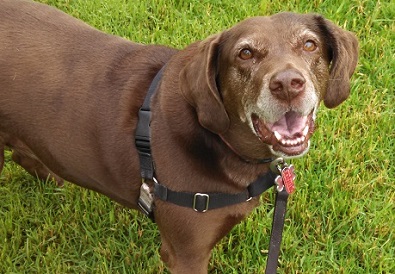
However, if you have an especially strong dog, especially if she is reactive to other dogs or people and you have trouble controlling her on the anti pull harness, I suggest you meet with a trainer to learn some tips or possibly discuss other tools like a Gentle Leader or prong collar.
The anti pull harness is not ideal for every dog, no matter what some trainers will tell you. And like I said earlier, if your dog truly hates wearing a harness, it might not be worth using one when we have so many options available. Why not just use a martingale collar?
And as with any tool, you need to learn how to use the no pull harness properly and determine if it’s really the best choice for your unique dog.
So now that I’ve told you more than you wanted to know about no pull harnesses, let me know what you think in the comments.
Do you use a no pull harness for your dog?
Let me know in the comments!
TRAINING COLLAR OPTIONS MENTIONED IN THIS ARTICLE:
- Gentle Leader.
A Gentle Leader fits around the dog’s muzzle for a gentle way to encourage the dog not to pull. - Prong collar.
Prong collars are helpful training tools for strong pullers that makes it easier to transition to a regular, flat collar. - No-pull harness.
An EasyWalk no-pull harness is helpful if you prefer a harness for training. The leash clips to the chest, encouraging the dog not to pull.
Also see my related articles:
- Gentle Leader vs. pinch collar
- Teaching a dog to heel vs. loose-leash walking
- Halti vs. Gentle Leader
- Reasons not to use a Halti
- Yes I use shock and prong collars
This article was originally published in 2014 and I have made updates and republished it. Some of the comments below are the originals.

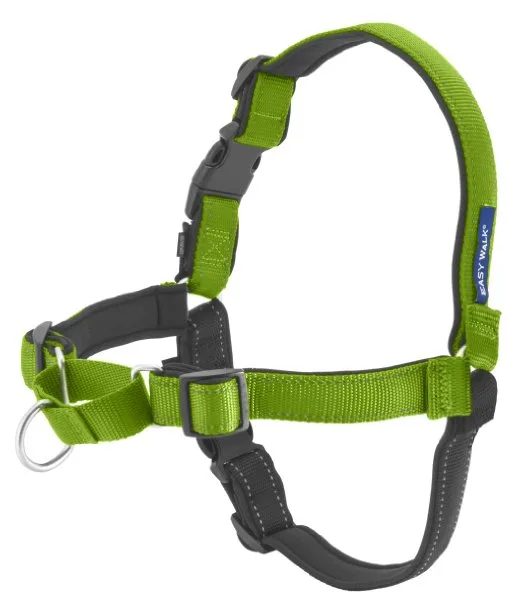
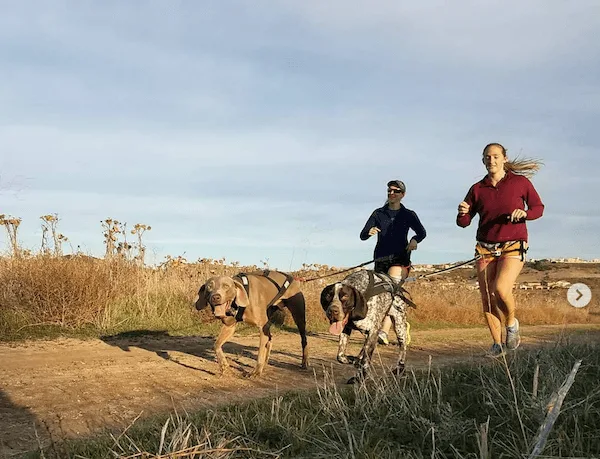
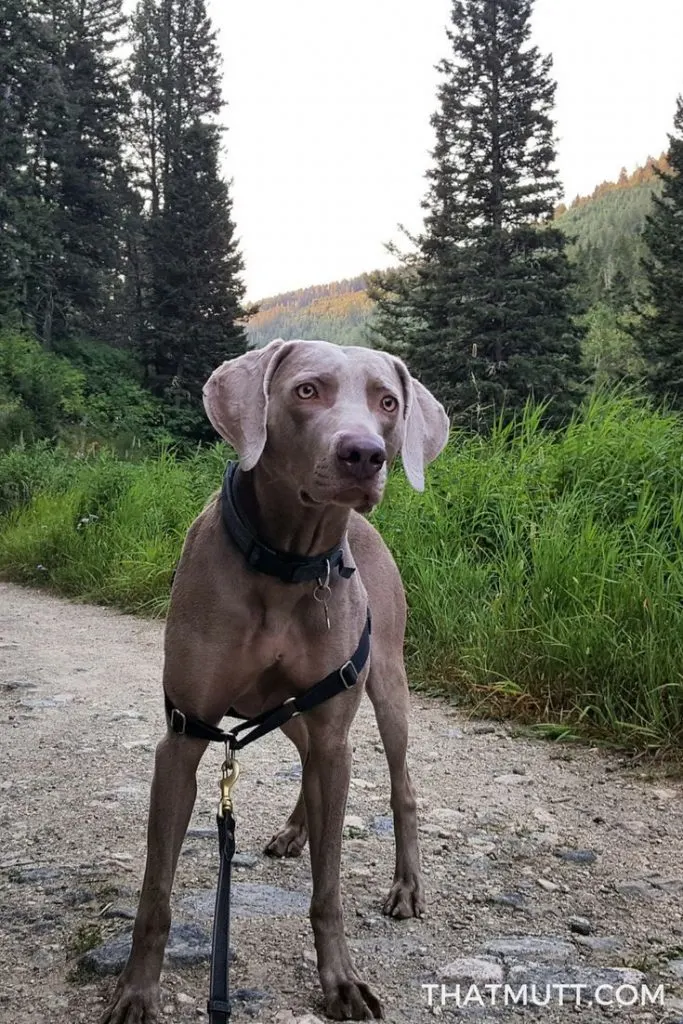
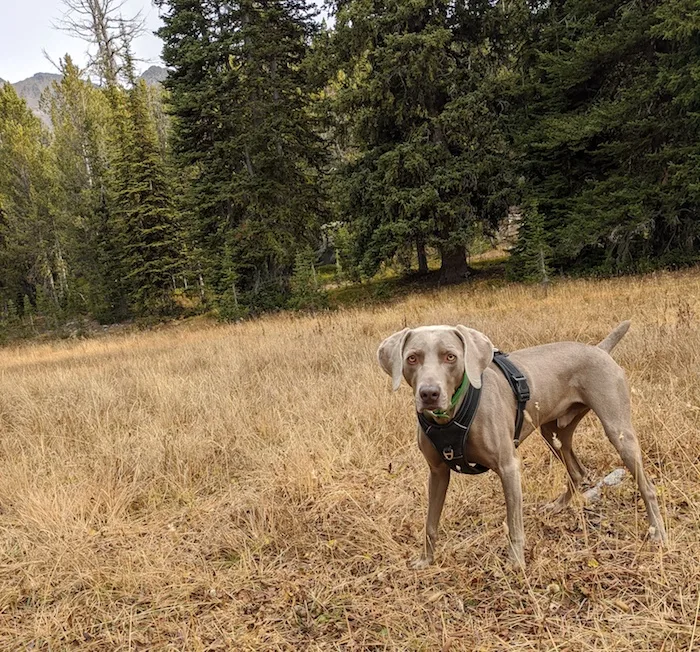
The best way to Cease My Canine From Chasing Squirrels - theplutoscience.com. Your daily Pet newsletter
Wednesday 6th of December 2023
[…] canine love their prong collars. It means they’re going for a stroll! They don’t love their no-pull harnesses or their Light […]
Top 25 What Is A No Pull Dog Harness Lastest Updates 10/2022
Friday 21st of October 2022
[…] Read More […]
Top 5 How Do No Pull Dog Harnesses Work Lastest Updates 10/2022
Thursday 20th of October 2022
[…] Read More […]
Does a No Pull Harness Work? Harness to Stop Pulling – Coolitemsonline.com
Saturday 28th of August 2021
[…] Source link […]
KL
Tuesday 11th of May 2021
I used a prong on my first dog because it was what worked for her. I’m currently using one on the puppy, but I plan to get away from that for a few reasons. 1) It isn’t allowed on the grounds of any AKC sanctioned event; 2) it ultimately costs me focus because I think he actually gets more amped up when he feels it tighten; 3) it’s difficult to properly fit even a Herm Sprenger to his neck so that it stays in place; and 4) he’s very nicely and calmly responsive to leash pressure on a slip and I suspect that might end up working very well until he and I are skilled enough to work on a flat collar.
That said, he gets VERY excited when he sees the prong come out, to the point that I have to just be a tree until the jubilation is over and he offers me a calm sit.
Lindsay Stordahl
Wednesday 12th of May 2021
It sounds like you two are working really well together. Good job!